Abstract
The authors describe a simple test (the blood incubation infectivity test) by which Trypanosoma brucei (sensu stricto) may be differentiated from T. rhodesiense without recourse to human volunteers. The method consists in incubating the strain of trypanosome under test for 5 hours at 37°C in vitro in human blood, followed by observation of the effect of this procedure on the strain's infectivity to rats.
Thirteen strains of T. rhodesiense were investigated; in each, the ability to infect rats was retained after incubation. In all 6 strains of man-tested T. brucei, it was destroyed.
The consistency of the results with proven strains suggests very strongly that the blood incubation infectivity test provides a valid means of differentiating these parasites.
Full text
PDF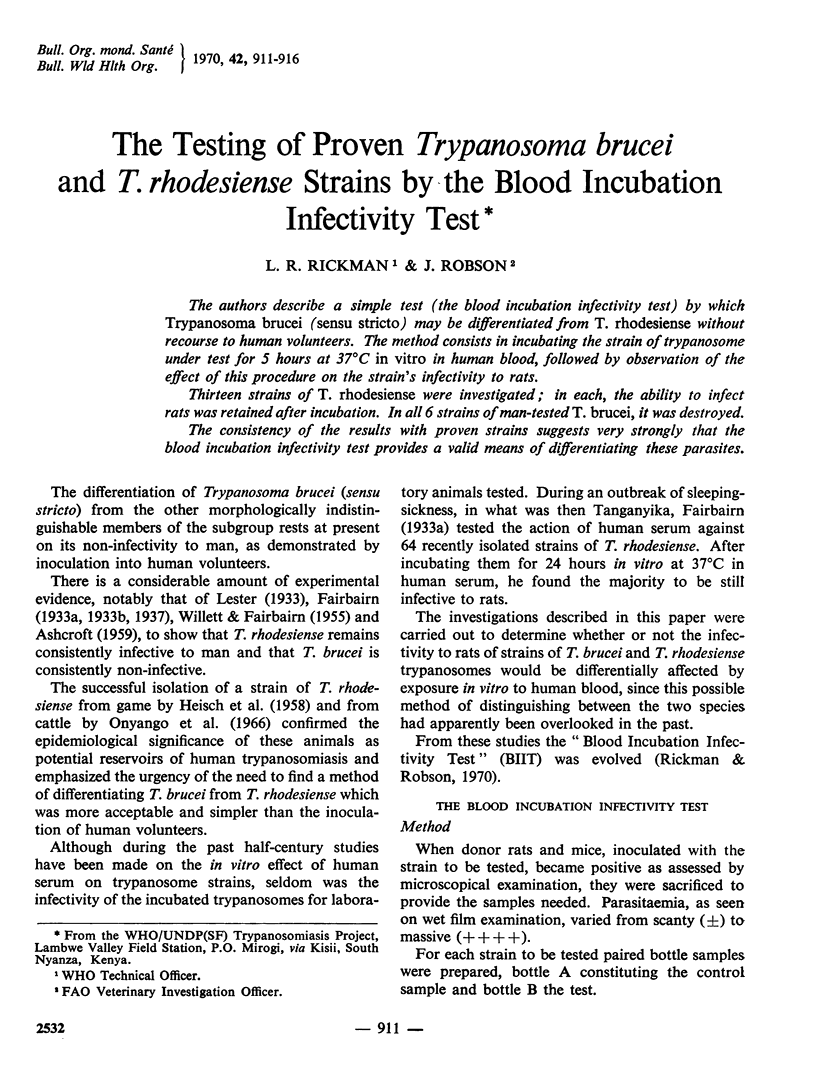
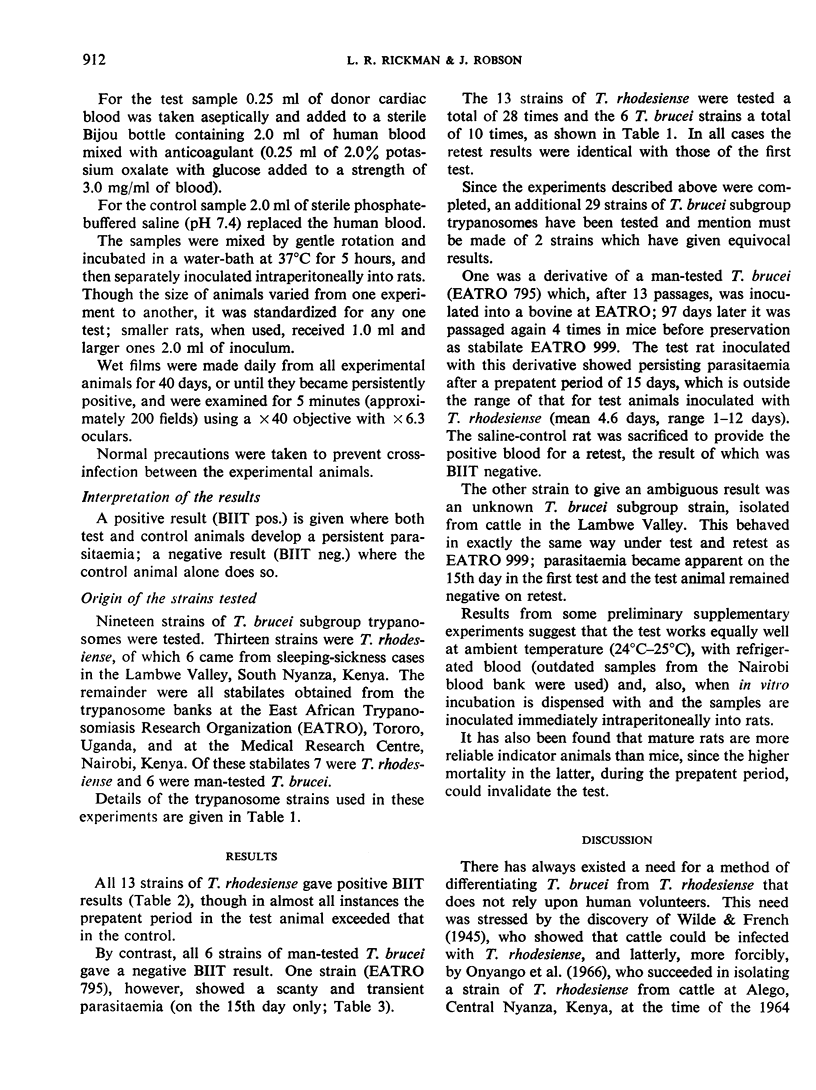
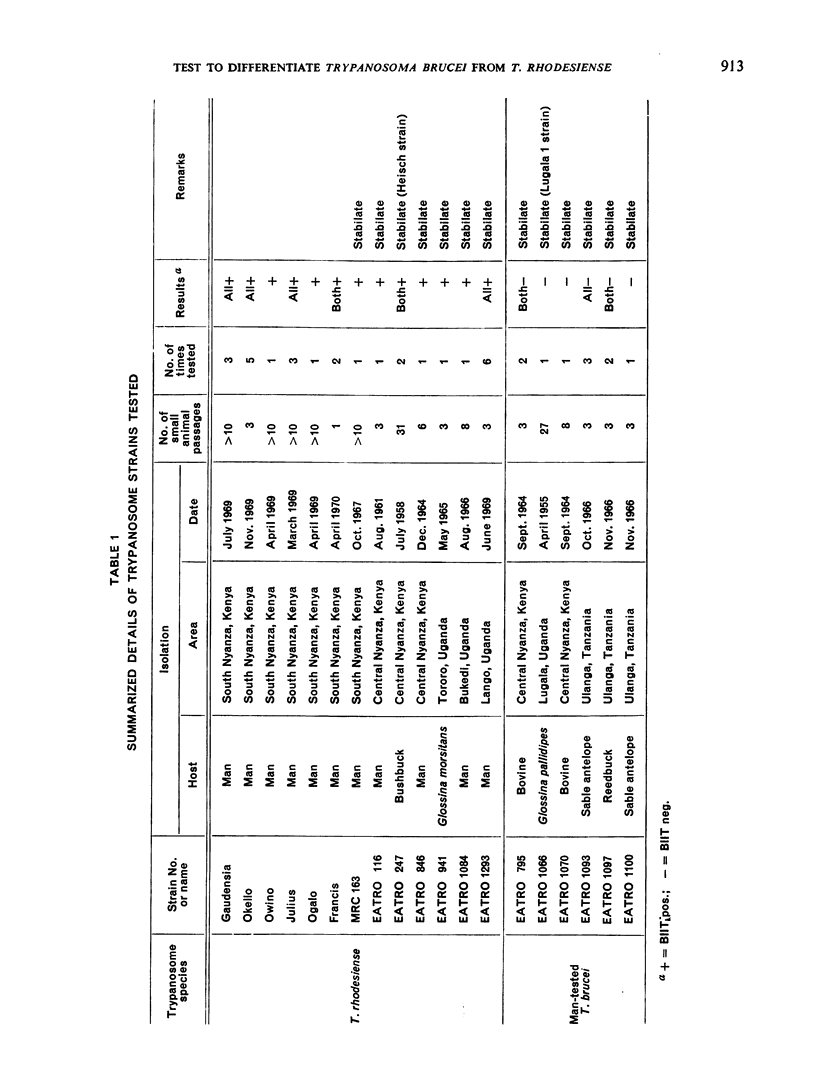
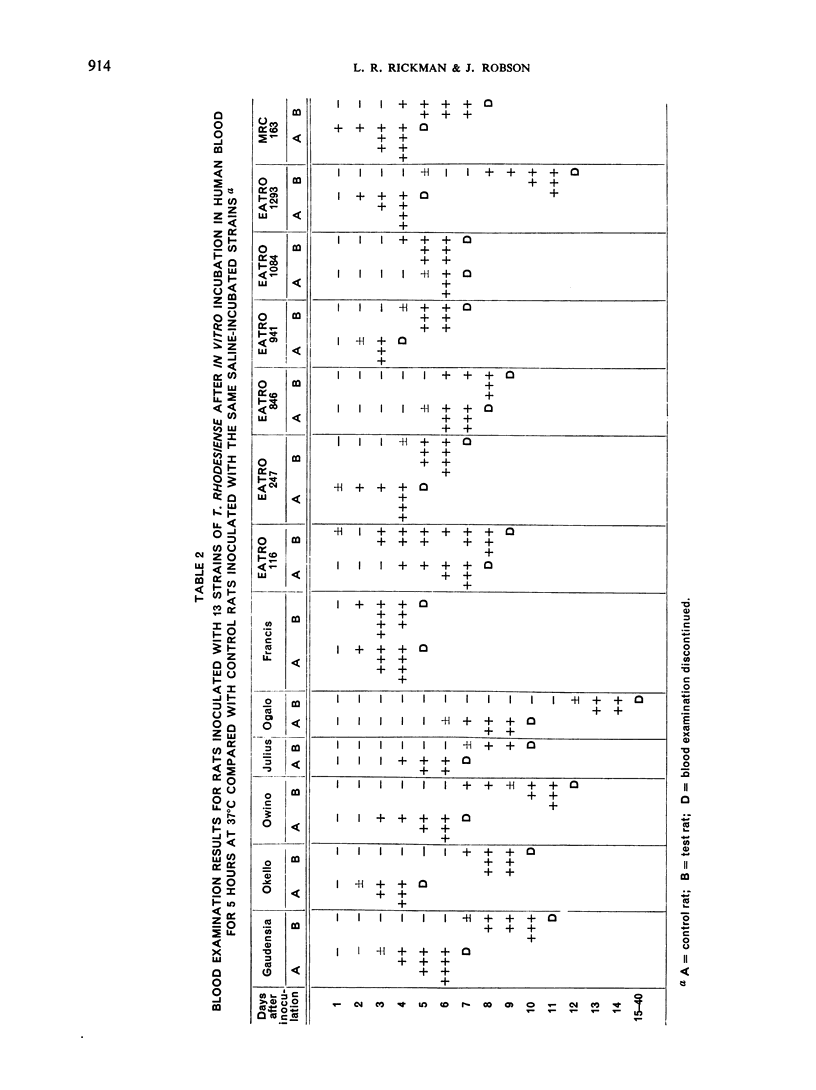
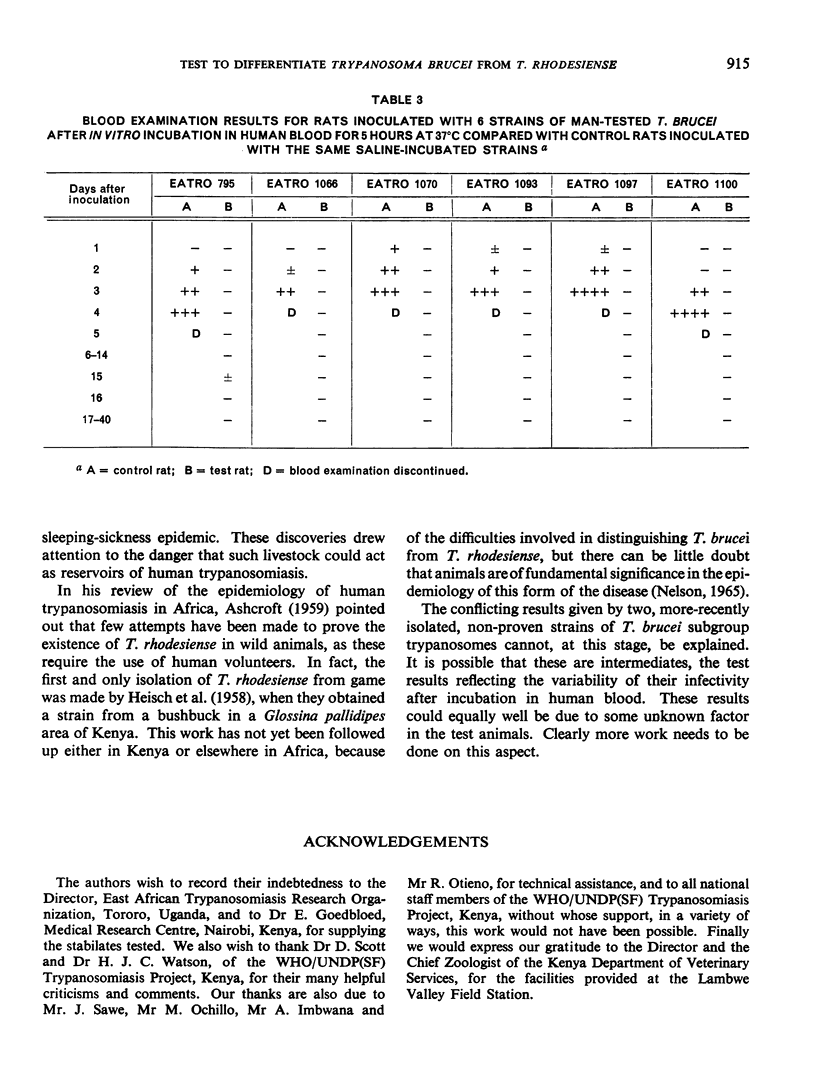
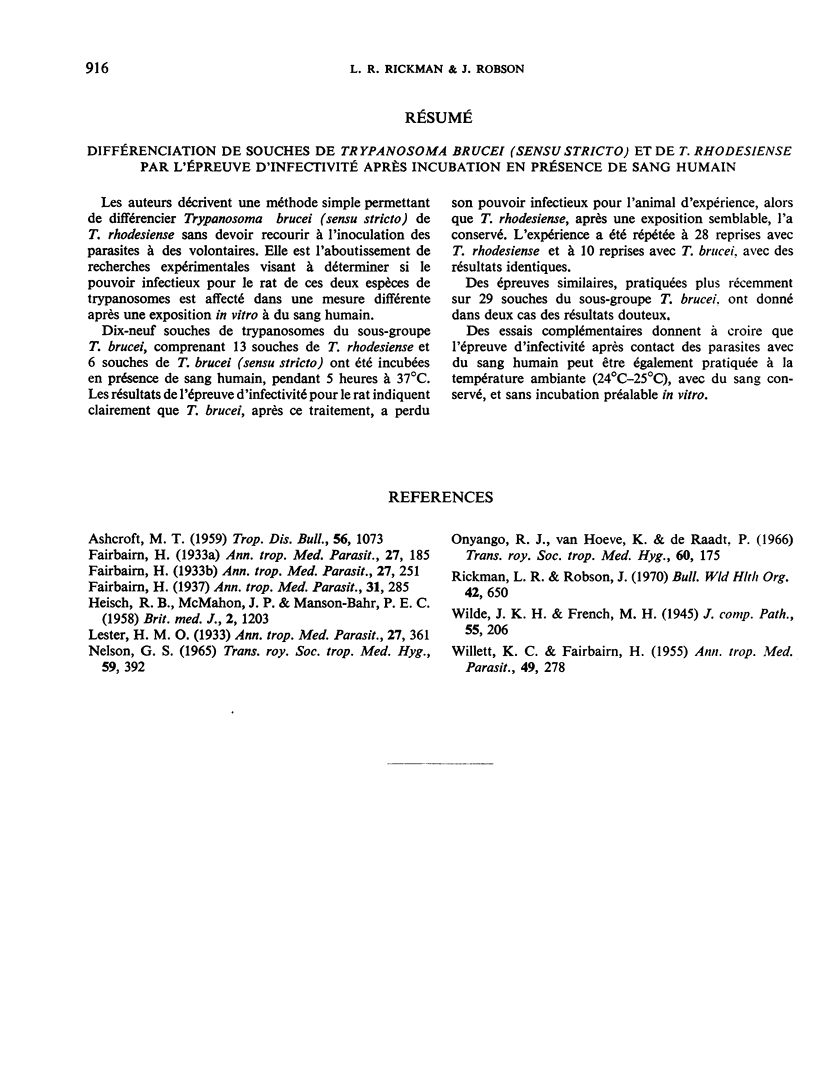
Selected References
These references are in PubMed. This may not be the complete list of references from this article.
- ASHCROFT M. T. A critical review of the epidemiology of human trypanosomiasis in Africa. Trop Dis Bull. 1959 Nov;56:1073–1093. [PubMed] [Google Scholar]
- HEISCH R. B., McMAHON J. P., MANSONBAHR P. E. The isolation of Trypanosoma rhodesiense from a bushbuck. Br Med J. 1958 Nov 15;2(5106):1203–1204. doi: 10.1136/bmj.2.5106.1203. [DOI] [PMC free article] [PubMed] [Google Scholar]
- Onyango R. J., Van Hoeve K., De Raadt P. The epidemiology of Trypanosoma rhodesiense sleeping sickness in Alego location, Central Nyanza, Kenya. I. Evidence that cattle may act as reservoir hosts of trypanosomes infective to man. Trans R Soc Trop Med Hyg. 1966;60(2):175–182. doi: 10.1016/0035-9203(66)90024-1. [DOI] [PubMed] [Google Scholar]
- Rickman L. R., Robson J. The blood incubation infectivity test: a simple test which may serve to distinguish Trypanosoma brucei from T. rhodesiense. Bull World Health Organ. 1970;42(4):650–651. [PMC free article] [PubMed] [Google Scholar]
- WILLETT K. C., FAIRBAIRN H. The Tinde experiment: a study of Trypanosoma rhodesiense during eighteen years of cyclical transmission. Ann Trop Med Parasitol. 1955 Oct;49(3):278–292. doi: 10.1080/00034983.1955.11685676. [DOI] [PubMed] [Google Scholar]


